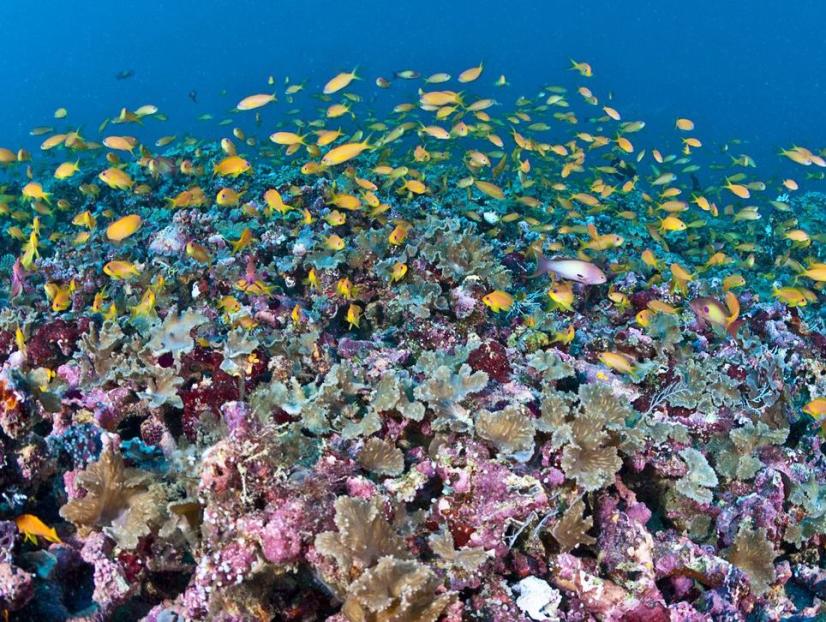All Coral Reefs Could Be Dead Within 80 Years

A new simulation shows that viable coral sites will virtually all be gone by 2100.
Scientists are racing to preserve and restore coral reefs in the face of climate change.
Rising ocean temperature and acidification must be combated with climate action.
Researchers say the potential death of all coral reefs around the world could come as early as 2100 without meaningful and dramatic intervention. The problem is twofold, with rising ocean temperatures and increasing acidity each contributing to an inhospitable place for corals to live.
At the recent Ocean Sciences Meeting 2020 of the American Geophysical Union, Renee Setter of the University of Hawaii presented a new paper detailing the findings. Setter is a biogeographer, and the research she unveiled came from a complex simulation of ocean conditions over time.
Setter’s team’s poster abstract explains its methodology:
“This study examines site selection in future climate scenarios for the successful establishment of coral transplants in tropical regions as well as globally. Potential sites are assessed for their restoration suitability by accounting for projected environmental characteristics and proxies for human impact through a regression analysis.”
So the scientists aren’t even studying preservation—they’re studying restoration of coral reefs, and the picture is still grim. Their analysis showed that virtually no viable restoration sites will still be viable by 2100. In addition to ocean temperature and acidity, the researchers estimated human waste from nearby inhabited places and continuing overfishing behaviors.
That sounds grim, but these researchers say they’re arguing for better practices and priorities with restoration sites today in order to maximize future potential.
“It is imperative to include suitability analysis in the design of future projects to enhance the potential for successful restoration and maximize efficiency by focusing resources on promising sites,” they write. “These findings contribute to ongoing work of evaluating restoration protocols and can inform necessary modifications to restoration practices as well as increasing efforts to decrease CO2 emissions to prevent the loss of coral reefs.”
In other words, the time for the dramatic truth is now, when it’s still not too late to change the behaviors that are killing coral reefs. We could push that terminal date out hundreds more years or spend more resources to create protected specific areas where coral are able to survive. It’s up to other researchers to decide what to do with the outcomes from this simulation.
Ocean acidification is sometimes the Jan Brady of climate change harm to the oceans: overall, warming of the oceans gets a lot more attention. But acidification is just as harmful, and it’s also a more directly proportional consequence of carbon dioxide emissions. That increased carbon dioxide dissolves into the oceans naturally, and while carbon dioxide itself isn’t acidic, in water it creates acidity because of how it bonds with the water molecules.
One reason this change affects the oceans so dramatically is because of how critical basic calcium carbonate (the active ingredient in Tums) is to many ocean creatures. The ocean is full of organisms that live inside hard shells, and those shells are primarily made by using ambient calcium carbonate. The ocean is supersaturated with the stuff. Lowering the overall pH to a more acidic range means disrupting and destroying the ratio of available calcium carbonate, and this leaves billions of organisms without the resources they need to live and protect themselves.
Setter says small-scale “fixing” type behaviors like local cleanup are still valuable. “But at the end of the day,” she says, “fighting climate change is really what we need to be advocating for in order to protect corals and avoid compounded stressors.”
You Might Also Like